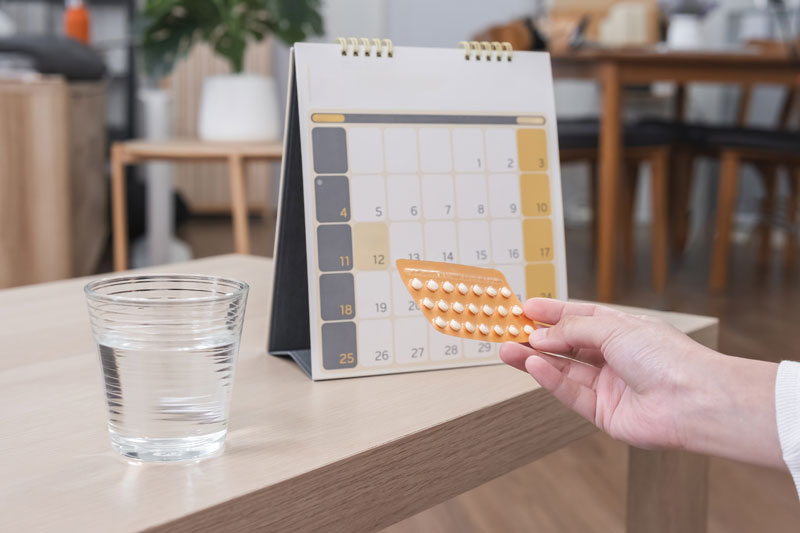Pregnancy Calendar: Weekly Growth, Tips, and Warnings

Becoming a parent is one of the most life-changing experiences. It begins with understanding your body, and a pregnancy calendar is one of the most effective tools to guide you through this journey. From the moment you see those two lines, everything in your life changes. These include your emotions, your body, and your whole daily routine.
With this week-by-week calendar, you can keep track of your symptoms, your baby’s progress, and essential tasks at every stage of pregnancy. Let’s delve in!
1st Trimester (Weeks 1-12): The Foundation Stage

Your pregnancy journey begins in the first trimester. Even though you may not appear pregnant just yet, a lot is actually going on beneath the surface.
Baby’s Growth
By the fourth week, the fertilized egg implants in your uterus and starts to develop into the placenta. By week six, you will start to hear your baby’s heartbeat. By the end of this trimester, you will see how your baby has already formed major organs, legs, arms, fingers, and even eyelids.
Changes in Your Body
Throughout weeks 1 to 12, you will experience many changes in your body. For the very first few weeks, fatigue, nausea, mood swings, and tender breasts are very common. By this point, your body will produce hormones like progesterone and hCG (human chorionic gonadotropin). hCG is a hormone that is produced by the placenta. It thickens the lining of your uterus to support a fetus.
To-Do List:
- Schedule your first appointment, which is typically scheduled around 8 weeks.
- Take prenatal vitamins that are high in DHA, iron, and folic acid.
- Stay clear of smoking, alcohol, and unpasteurized foods.
- To reduce morning sickness, eat small, but frequent meals.
- Use a journal or pregnancy calendar to keep track of your symptoms.
What to Avoid:
- Saunas and hot tubs are not risky normally, but they can cause harm to pregnant women due to overheating risks.
- High-mercury fish, like shark or swordfish.
- Stress is a common issue, so it’s highly recommended to establish a support system early.
Please note that this is all about establishing the foundation for a healthy pregnancy, both for you and your baby.
2nd Trimester (Weeks 13-27): The Golden Period
Welcome to the second trimester, or the golden period of pregnancy, since many of the unpleasant symptoms you experienced during the first trimester will start to subside. It’s also known as the “honeymoon phase,” as many expectant mothers feel their best when energy levels increase.
Baby’s Growth
Although you might feel more energized, conditions such as heartburn, leg cramps, and backaches may start to occur. Meanwhile, around weeks 18-22, the bump starts to show, and some women can already feel the baby’s first movements.
Around these weeks, you can usually find out the gender of your baby via ultrasound. Some tests, like a non-invasive prenatal testing (NIPT), can even reveal the gender as early as the 10th week.
To-Do List:
- Schedule your anatomy scan between 18 and 22 weeks of pregnancy.
- Consider shopping for some maternity clothes as your body changes.
- Start practicing light exercise or prenatal yoga if possible.
- Keep using your pregnancy calendar to track your milestones.
- Perhaps you can start looking into childbirth classes or consider thinking about baby names, since you already know the gender.
What to Avoid:
- Sleeping flat on your back can be uncomfortable for your back. Consider using pillows to support side-sleeping.
- Vigorous activity without a doctor’s approval.
- Too much caffeine (no more than 200 mg daily).
This trimester is perfect for starting to plan for everything, including preparing for the birth of your child while still feeling radiant.
3rd Trimester (Weeks 28-40+): Preparing for Arrival

As your due date approaches, it’s fairly normal for you to start feeling both anxious and excited. This trimester is all about final preparations, whether physical or emotional.
Baby’s Growth
During this last trimester, your baby is growing stronger for life outside the womb, gaining weight, and developing lungs. Most babies are even already head-down and preparing for birth by week 36.
Changes in Your Body
You may start experiencing several conditions, such as swollen ankles, shortness of breath, frequent urination, and Braxton Hicks contractions. Nesting instincts may also begin to take hold. As mentioned on the Cleveland Clinic website, the nesting instinct is the urge to prepare your nest, which is actually your home, ready for your baby.
To-Do List:
- Start packing your hospital bag for you and your baby. You can do this around 36-37 weeks of pregnancy. Make sure to pack only the essentials, such as comfortable clothes, baby essentials, and some snacks, if needed.
- Complete your birth plan.
- Install your car seat correctly, as many hospitals require this.
- Prepare the nursery, wash the baby’s clothes, and stock up on diapers.
- Use your pregnancy calendar to track fetal movements daily.
- Discuss labor symptoms with your obgyn.
What to Avoid:
- Standing for too long or heavy lifting.
- Skipping meals because your baby needs more nutrients than ever.
- Neglecting rest. So, be sure to take enough naps, drink plenty of water, and slow down when needed.
As you approach the finish line, remember that each week brings your little one one step closer to being ready to face the world.
Quick Pregnancy Calendar Checklist for Every Trimester
Although pregnancy can feel overwhelming, you can maintain your focus and confidence by breaking it down into several manageable milestones. You can use this trimester-by-trimester checklist to keep on track with your health, baby’s growth, and practical preparations.
1st Trimester (Weeks 1–12): Health and Foundations
- Schedule first prenatal visit at around week 8
- Start prenatal vitamins rich with folic acid
- Calculate your due date and start your prenatal calendar
- Avoid alcohol, smoking, and other unsafe foods
- Get urine and blood tests during doctor checkup
- Adjust to early pregnancy symptoms such as fatigue or nausea
- Have a nutritious diet that includes leafy greens, lean protein, whole grains
2nd Trimester (Weeks 13–27): Planning and Growth
- Anatomy scan (between week 18-22)
- Maintain your healthy diet and prenatal vitamins
- Start pregnancy-safe physical activity (walking, yoga)
- Conduct research and establish a baby registry
- Starting budgeting and maternity leave planning
- Tour hospitals or birth centers if it’s possible
- Attend classes on childbirth education
- Use your pregnancy calendar to monitor symptoms and fetal movements
3rd Trimester (Weeks 28–40+): Preparation and Delivery
- Complete the birth plan with the service provider
- Prepare the hospital bag by week 35
- Clean the baby’s clothes, bedding, and equipment
- Installing and testing a baby seat
- Monitor baby’s kick counts every day
- Get plenty of postpartum supplies
- Set up a support system or childcare
- Recognize signs of labor
- Keep a pregnancy calendar with all the important dates and symptoms
While the list above is helpful, feel free to customize it based on your doctor’s advice and your own preferences.
How Partners Can Support During Pregnancy
Keep in mind that pregnancy isn’t just a journey for the mother—partners play a significant role as well. Their assistance can be crucial for everything from attending prenatal appointments to assisting with everyday tasks during the more exhausting third trimester.
During the first few weeks, partners can help by creating a shared pregnancy calendar where they can keep track of appointments and milestones for each trimester. Communication becomes even more important as pregnancy progresses. So, start discussing everything, such as parenting goals, sharing concerns, and preparing together for the arrival of your little one.
By being actively involved, partners not only lighten the load but also make lasting memories during this life-changing period.
Every Pregnancy is Different, So Trust the Process
Social media often encourages people to compare everything, including their pregnancy journeys. However, that doesn’t mean you are falling behind or doing something incorrectly just because your favorite influencer experienced kicks at week 16 or didn’t have any morning sickness.
You may feel more exhausted or experience unusual food cravings. One day you might be full of energy, and the next day you might be emotionally overwhelmed, and that’s totally okay.
Consider using your pregnancy calendar as a guide, rather than a rulebook. Instead of making you anxious, let it inform you. Your growing little one is unique, and so are you. The most important things are listening to your body, opening communication with your doctor, and not being afraid to ask for support from your loved ones.
Pregnancy Is a Personal Journey
Pregnancy is a unique and personal journey. It’s always filled with physical changes, emotional highs, and constant learning. While a pregnancy calendar can assist you to stay on track, keep in mind that every pregnancy is unique. So, don’t hesitate to ask for help when you really need it. Trust your body and listen to your doctor.
Along the way, nutrition plays a significant role, especially the ones that support both your health and your baby’s growth, such as calcium as pregnancy supplements, which becomes more important as your body changes.
If you found this guide useful, please share it with fellow parents-to-be or leave a comment with your own experience.







